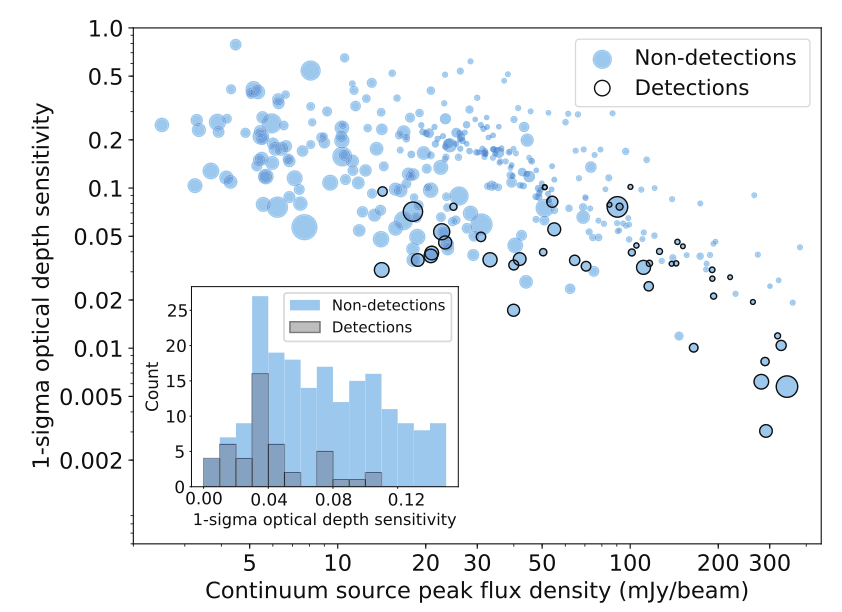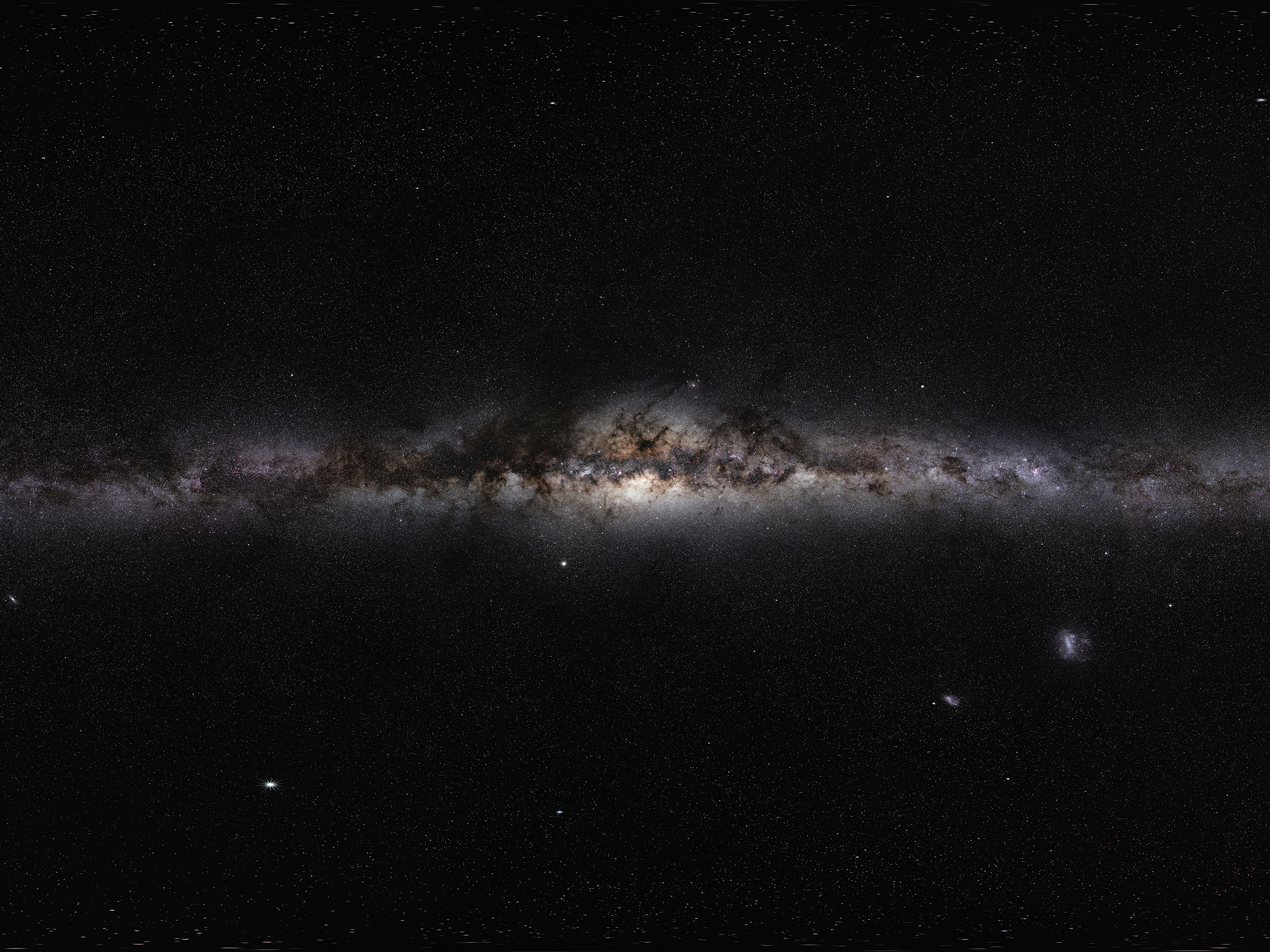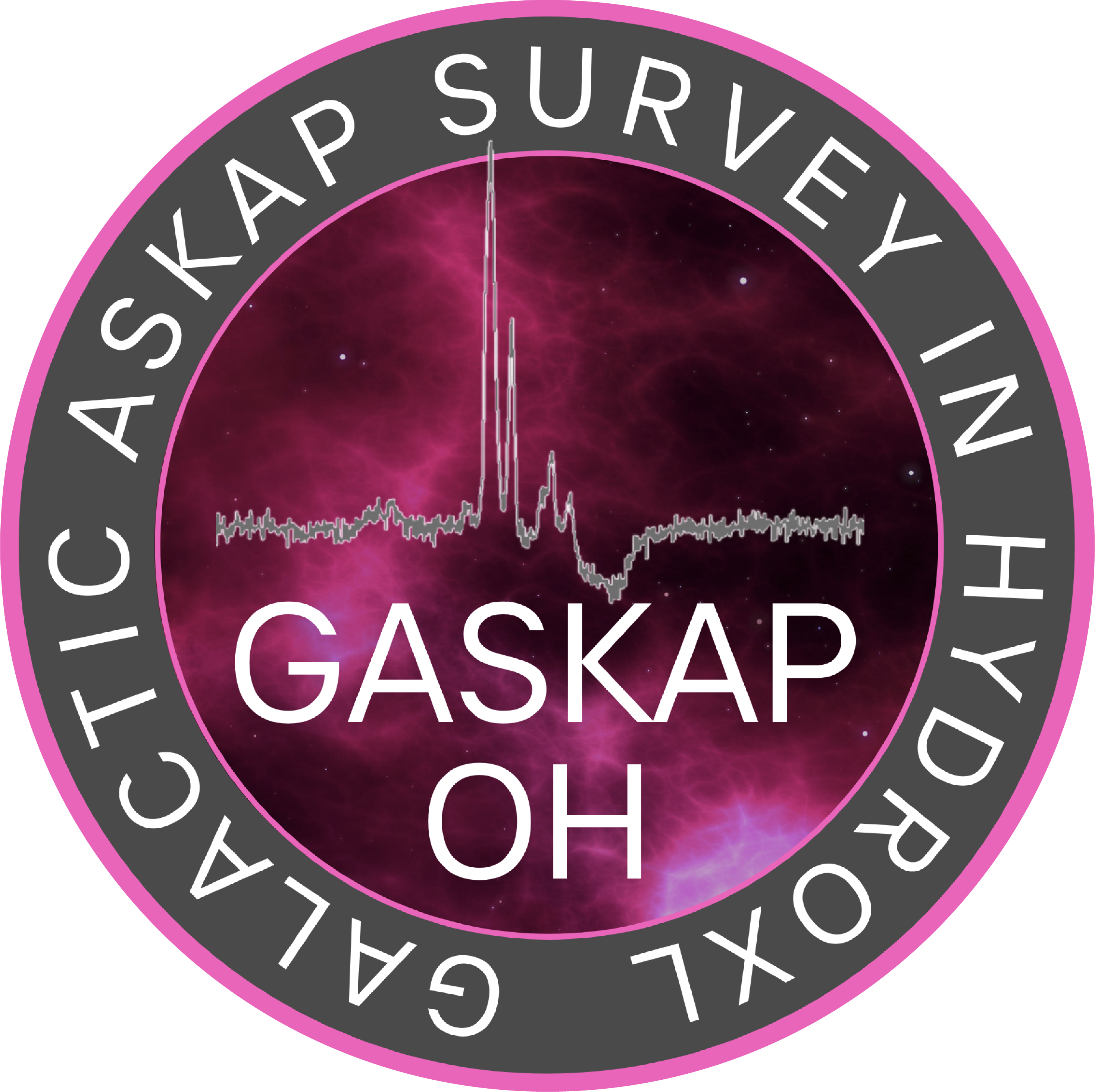Science goals
The flow of matter and energy between stars and the interstellar medium (ISM) is at the heart of galaxy evolution. GASKAP-OH will reveal the formation and early evolution of molecular clouds and young stars, and the end-of-life activities of old massive stars in the galactic context, at a level of detail that can only be achieved through observations of our own Galaxy and Magellanic System.

Star Formation
OH masers (primarily 1665 and 1667 MHz) probe late stage high-mass star formation. Previous OH maser surveys have been limited in coverage, sensitivity and/or transitions. GASKAP-OH will provide the deepest ever unbiased survey of star-formation OH masers in the Southern Hemisphere, revealing a currently invisible population.
GASKAP-OH’s deep flux-density limited sample will allow statistical comparison with surveys of other star forming masers (e.g. class II methanol and water lines from the Methanol Multibeam Survey and H2O Southern Galactic Plane & multiwavelength data), definitely placing OH masers in the high-mass evolutionary timeline.
Zeeman splitting of the OH maser lines will also provide a large sample of in-situ measurements of the strength and direction of the magnetic field in star forming regions.

Evolved Stars
Evolved stars, especially in the AGB and post-AGB phase, play a major role in returning metal-rich stellar mass to the ISM. However, the total rate of mass return is poorly constrained, and the precise relationship between mass-loss rate and luminosity (which depends sensitively on the dust fraction in the outflow) is still unknown.
OH circumstellar masers (primarily 1612 MHz) provide an excellent tool to probe mass loss from AGB stars. GASKAP-OH will allow us to measure AGB wind speeds and luminosity function of circumstellar OH masers in a larger and more complete sample than ever before. We will track variability on months~years cadence, and uncover rare, short-lived phases in late-stage stellar evolution. The Large Magellanic Cloud field will allow us to study wind-driving at low metallicity.
Supernova Remnants
1720 MHz OH masers are excited by shock collisions in molecular gas around supernova remnants. Supernova Remnants (SNR) are mostly detected in radio continuum. OH masers add significant scientific value, yielding systemic velocity and expansion velocity, potentially magnetic fields measurements, and allowing us to probe cosmic ray acceleration sites. Only ~10% of SNR currently have OH maser detections. GASKAP-OH will vastly increase this number.
Molecular Cloud Evolution

The formation of dense molecular clouds from the diffuse atomic ISM sets fundamental boundaries on the star formation rate.
GASKAP-OH, in combination with GASKAP-HI, will provide a statistical census of the atomic and molecular gas along hundreds of absorption sightlines through the Milky Way Disk, allowing us to probe the cold ISM pre- and post-transition to the molecular phase, and constrain the conditions required for the atomic-molecular phase transition.
Importantly, the OH lines are able to probe so-called ‘dark’ molecular gas – diffuse H2 that is very poorly traced by common tracers such as CO, allowing us to estimate “missing” molecular gas.
Modelling the excitation of the OH lines can constrain temperature, density and mass of both the molecular and atomic gas, and track how these vary with Galactic environment.

